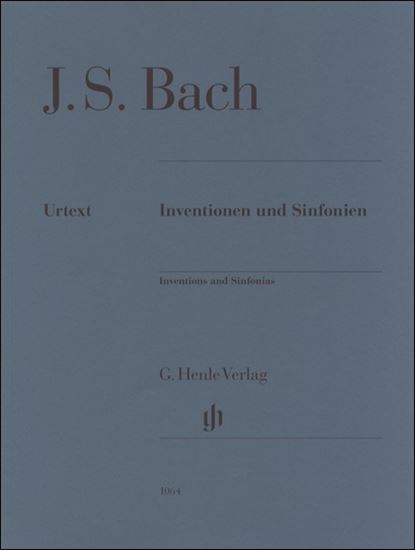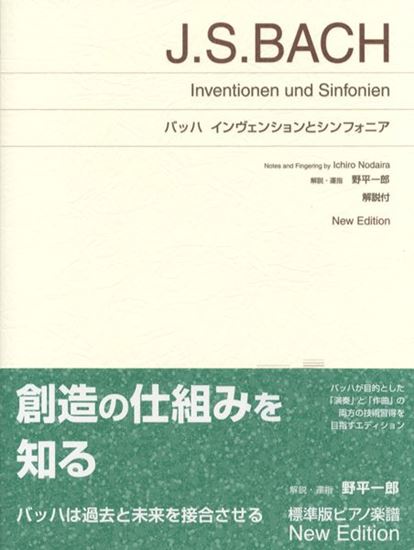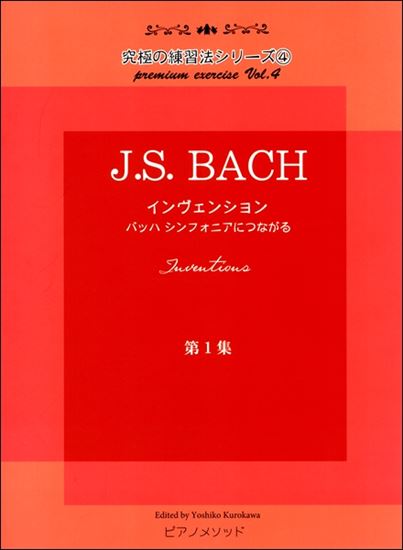Bach, Johann Sebastian : Invention Nr.13 a-moll BWV 784
Work Overview
Genre:pieces
Total Playing Time:1 min 30 sec
Copyright:Public Domain
Commentary (3)
Author : Takamatsu, Yusuke
Last Updated: September 18, 2020
[Open]
Author : Takamatsu, Yusuke
A minor, 4/4 time.
This piece, like Nos. 11 and 12, possesses a kind of perpetuum mobile character due to the constant sounding of sixteenth notes. The theme is constructed from arpeggiated chords, and coupled with the frequent use of the technique of repeating the same melodic figure at different pitches (sequential progression), it is also characterized by rapid changes in musical character due to harmonic shifts.
This piece is divided into two halves, and the first half itself consists of two theme expositions. The second exposition (measures 6-13), while more developmental and slightly longer than the first exposition (measures 1-6), is essentially a transposition of the first exposition to the relative key, with the voices exchanged.
Author : Hayashikawa, Takashi
Last Updated: March 15, 2018
[Open]
Author : Hayashikawa, Takashi
The counterpoint appearing in the left hand from the third beat of measure 13, extending to the second beat of measure 14, forms a rhythmic motif common to motives a and b. In measure 19, theme c appears in its complete form in the right hand, while the left hand repeats the motive of the preceding two beats twice. The left hand in measures 20 and 21 presents an augmented form of the motive, and the first two beats of the right hand in measure 22, though not strictly motive a, are an augmentation of a part of the inversion of motive a' (a variant of a) appearing in the left hand in the same measure.
Score example provided by Bärenreiter Verlag
Author : Ooi, Kazurou
Last Updated: March 12, 2018
[Open]
Author : Ooi, Kazurou
No. 13 in A minor
Among the 15 Inventions, this is considered technically the most difficult. Learners will require meticulous practice, and performers and teachers may find this Invention serves as an excellent etude. Fingering might be crucial for this Invention, as it could influence the difficulty. The piece is strong, fast, and intense. Eighth notes should be staccato and played at a reasonably fast tempo.
Sequences follow one after another, almost to the extent that it's no exaggeration to say the piece is built almost entirely on sequences, like a storm of sequences. Learners should first undertake a meticulous analysis. From there, let's examine the piece. (Note) The following analysis and performance suggestions are merely one example.
- Measures 1-2: The subject appears in the right hand.
- Measures 3-4: A one-measure sequence. The volume in m. 4 should be slightly reduced compared to m. 3.
- Measures 5-6: A two-beat sequence. As it descends, a diminuendo should be applied. It then modulates to C major. Assuming C major is a softer key compared to A minor, the volume should be restrained.
- Measures 7-8: Similar to mm. 1-2, the subject appears in the right hand, but in C major.
- Measures 9-10: A one-measure sequence. The volume in m. 10 should be reduced compared to m. 9.
- Measures 11-13: A two-beat sequence. Although it descends, it leads to E minor, and m. 14 features a diminished seventh chord; therefore, a crescendo should be applied to reach m. 14.
- Measures 14-17: A one-measure sequence. Since the original key awaits in m. 18, if m. 14 is played fortissimo, the volume should gradually decrease to reach m. 18.
- Measure 18: For one measure, the subject appears in a varied form.
- Measures 19-21: A one-measure sequence. Although it descends, whether to apply a crescendo or diminuendo here is a matter of differing opinions. The author would apply a crescendo.
- Measures 22-25: The subject is varied and concludes with only sixteenth notes.
For your reference.
Arrangements & Related Works(2)
PTNA & Partner Channel Videos(10items) View More
Sheet MusicView More
Scores List (41)
![やさしいピアノ名曲集2[発表会用/CD付] - 楽譜表紙画像](https://ptna-assets.s3.ap-northeast-1.amazonaws.com/enc/books/46.jpg)
(株)エー・ティ・エヌ

カワイ出版

(株)ヤマハミュージックエンタテインメントホールディングス
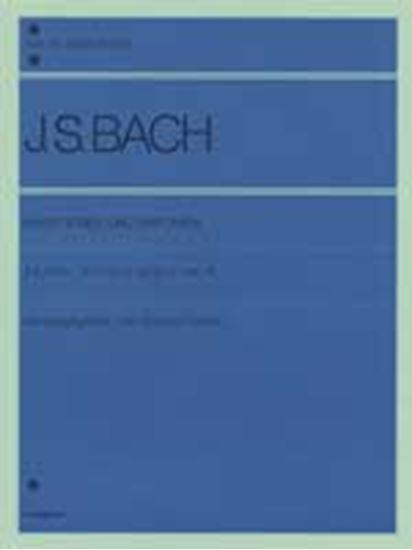
(株)全音楽譜出版社
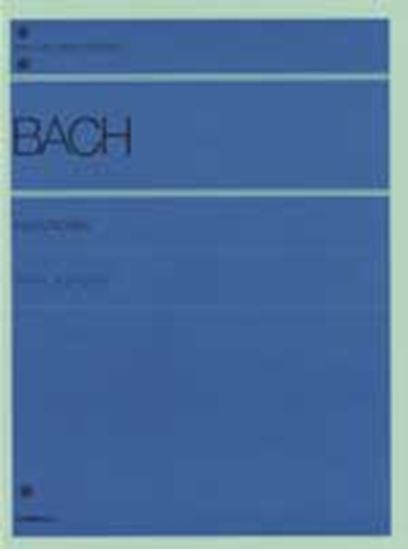
(株)全音楽譜出版社

(株)ヤマハミュージックエンタテインメントホールディングス

(株)ドレミ楽譜出版社

(株)ドレミ楽譜出版社

(株)ドレミ楽譜出版社

(株)音楽之友社

(株)全音楽譜出版社

(株)音楽之友社

(株)音楽之友社

(株)ドレミ楽譜出版社

(株)ドレミ楽譜出版社

(株)ドレミ楽譜出版社

(株)ドレミ楽譜出版社

カワイ出版

(株)渓水社

(株)音楽之友社

(株)全音楽譜出版社

(株)エー・ティ・エヌ

(株)全音楽譜出版社

カワイ出版

(株)音楽之友社

(株)音楽之友社

(株)東音企画(バスティン)

(株)ヤマハミュージックエンタテインメントホールディングス

(株)ヤマハミュージックエンタテインメントホールディングス

Neil A. Kjos Music Company















